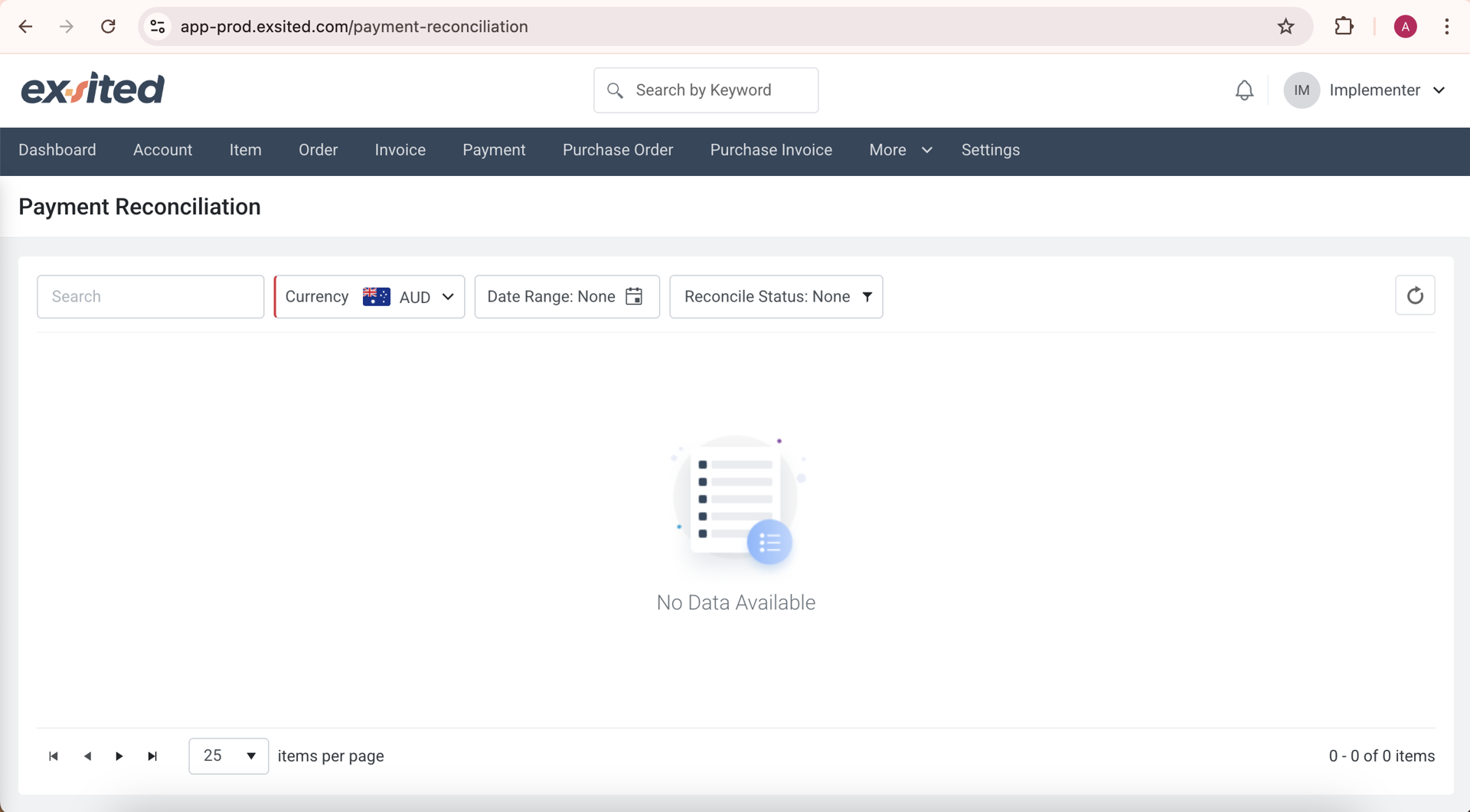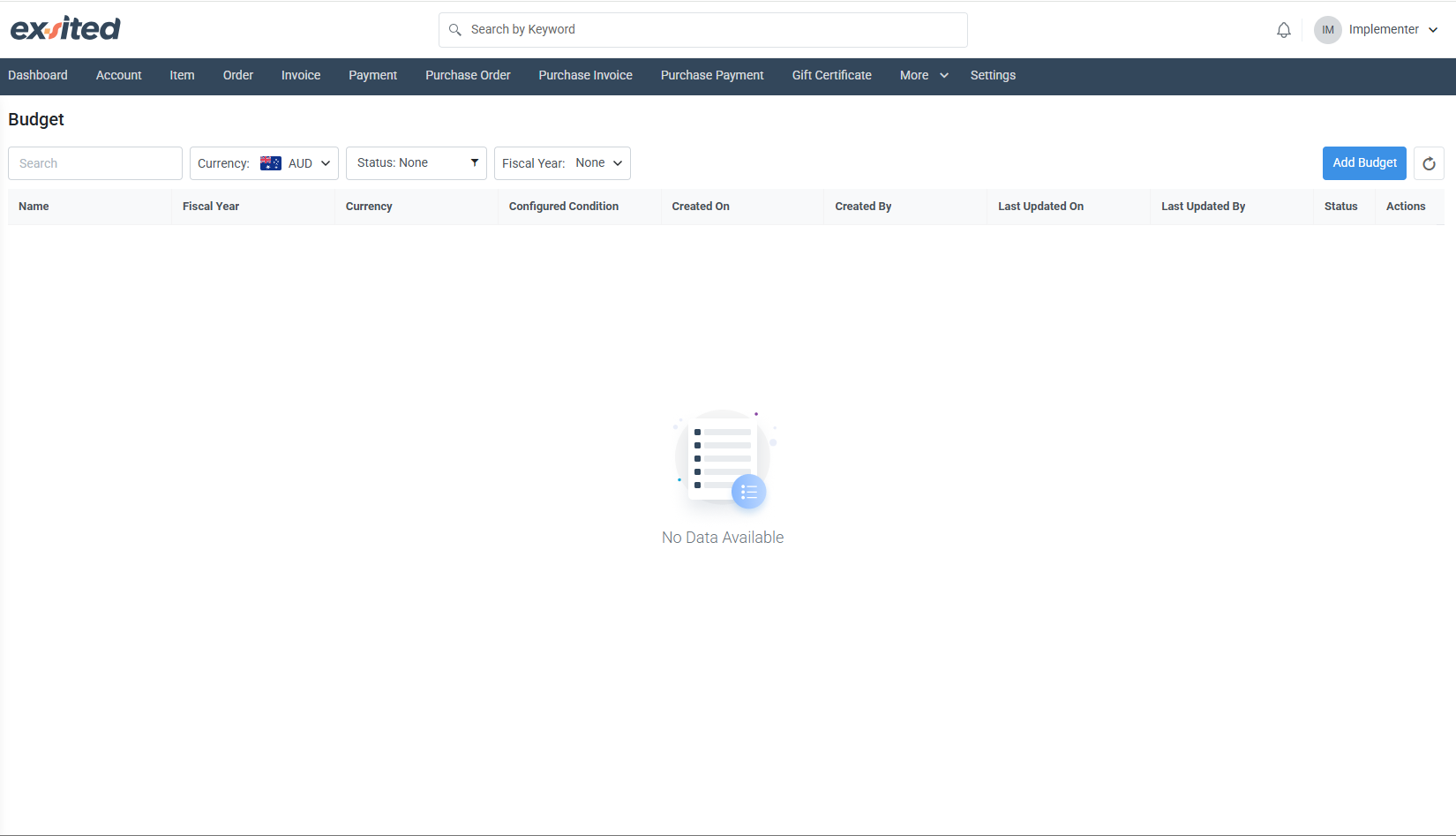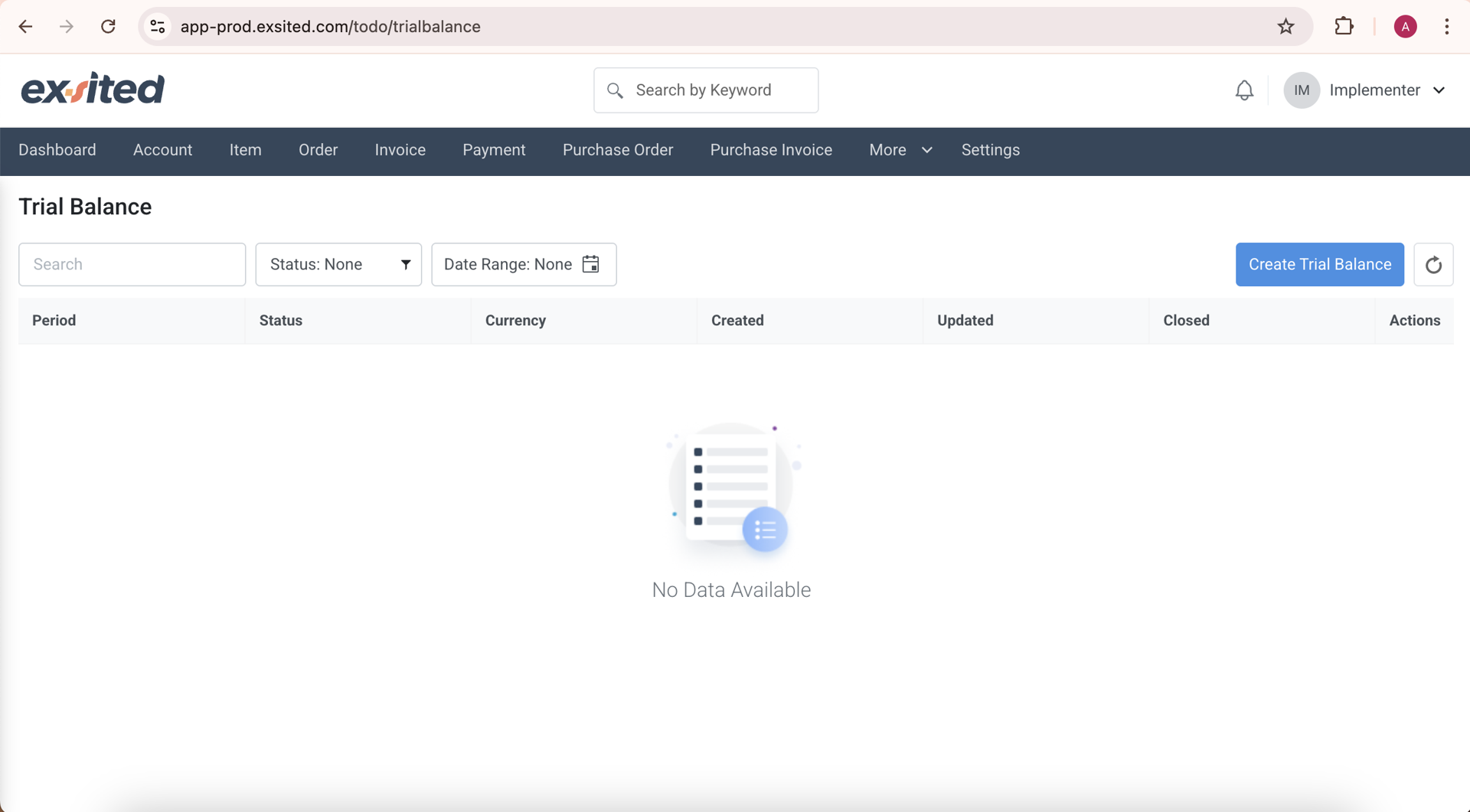Finance Modules Overview
The Extended Finance Modules in Exsited support advanced financial workflows beyond standard invoicing and payment management. These modules include Payment Reconciliation for accurate cash tracking, Budgeting tools for planning across fiscal years, Trial Balance generation for ledger validation, and Payment Runs for processing bulk customer payments. Designed for businesses with more complex financial operations, these modules provide greater control over financial accuracy, reporting, and strategic planning—enabling finance teams to operate with clarity and confidence at scale.
Payment Reconciliation
Overview:
The Payment Reconciliation screen is used to match incoming payments with invoices to ensure accurate accounting and cash flow reporting. This is a crucial step in closing financial periods and detecting discrepancies.
Key Functionalities:
- Filter reconciliation records by Currency, Date Range, or Reconcile Status (e.g., Pending, Reconciled, Error).
- Search transactions using customer or invoice keywords.
- Reconcile multiple payments to respective invoices.
Fields Displayed:
- Date – Date of payment transaction.
- Currency – Payment currency (default AUD).
- Reconcile Status – Whether the payment is reconciled or pending.

Budget
Overview:
The Budget screen is used to plan and monitor business financials across fiscal years. It provides a structured space for entering forecasted income and expenses by department or cost centre.
Key Functionalities:
- Create new budgets by clicking “Add Budget”.
- Filter budgets by Currency, Status, and Fiscal Year.
- View audit trail for each budget’s creation and updates.
Fields Displayed:
- Name – Budget title or department.
- Fiscal Year / Currency – Budget period and applicable currency.
- Configured Conditions – Any rule or scope applied (e.g., monthly, quarterly).
- Created / Updated Info – Tracks activity and user involvement.

Trial Balance
Overview:
This screen allows finance users to generate and track trial balance reports. The trial balance reflects all debit and credit balances across the ledger to verify accounting accuracy before financial statement preparation.
Key Functionalities:
- Create a new trial balance for a specific period using start and end dates.
- Track the status of each trial balance (e.g., Draft, Finalised, Closed).
- Filter by Date Range and Status to locate historical balances.
Fields Displayed:
- Period – Reporting period.
- Status – Current status (Open, Closed).
- Currency – Currency of transactions (e.g., AUD).
- Created/Updated – Timestamps for activity tracking.
- Closed – Flag indicating if the balance has been finalised.

Create Trial Balance Popup
Overview:
When users click “Create Trial Balance,” a pop-up allows them to define the time period for which they want the report. Both start and end dates must be selected for the process to continue.
User Inputs Required:
- Start Date – Beginning of the financial period.
- End Date – End of the financial period (e.g., 18/07/25 shown in example).
- Once both fields are filled, click “Create Trial Balance” to proceed.

Payment Run
Overview:
The Payment Run module is used to process bulk customer payments, particularly for invoices. It helps in managing large-scale collections, receipts, and updating statuses systematically.
Key Functionalities:
- Initiate new payment runs with the “Add” button.
- Filter records by Operator and Date Range to view historical runs.
- Track the flow from invoice processing to receipt generation.
Fields Displayed:
- Date – Execution date of the payment run.
- Invoice Processed – Number of invoices included.
- Amount Collected – Total payment amount.
- Payment Receipt Sent – Whether customer receipts were generated.
- Operator – User who triggered the run.
